An Early American Play Concept Makes a Come Back
Over the last couple of decades many traditional playground toys such as net climbers, merry-go-rounds, and tall swings have gotten a bad rap. Toys that were considered too tall, spin too fast, or swing too high were deemed suspect and were often removed under the guise that they were “too risky.”
Risk, however is perceived differently depending on which side of the “suspect” toy you are standing. Playground providers manage risk by establishing policies that circumvent the likelihood of a personal injury lawsuit. At the same time, they compete with other forms of entertainment such as electronic games and devices that tend to promote a sedentary indoor lifestyle where children and their families are spending the majority of their time. How can School Facilities Directors and Park Managers compete?
From a parental perspective, the desire to give children play experiences that offer just enough risk without causing physical injury to little Johnny or harm to what may be perceived as delicate self-esteem is becoming more and more evident. Scare tactics of the media continue to sensationalize and overdramatize the inherent risks to sticking one’s nose outdoors. This, thank goodness, is offset by programs like “Take Your Kids to the Park Day,”1 and the 4th annual “Take Our Children to the Park and Leave Them There Day.”2 Both were held Saturday May 18, 2013. And, yes you read that correctly; leave them there without you!
Experiencing risk is an integral part of a child’s healthy physical, mental, and emotional development. The Play & Playground Encyclopedia describes the positive aspects of challenge and risk: “When experiencing moments of apparent risk, their minds are placed in a state of alertness, resourcefulness, and expectancy. Mastering challenges results in giving children a sense of personal power and a satisfying feeling of accomplishment….Children learn about their own strengths and limitations by physically challenging themselves. If they are not overprotected and sheltered from risk, they will learn to make judgments about their own capabilities and make their own reasoned decisions about the risks involved.”3
History of Rope-based Play
It’s generally accepted that the rope-based play concept originated in Europe but there is certainly a lot of evidence to the contrary. In the 1930’s a former boxer and designer from Princeton University, Joe Brown, built a loose rope structure modeled after a boxing ring that he called a jingle-net, and a spinning cone climber known as the swing-ring. These encouraged both climbing and spinning sensations that required agility and swift reaction to the unexpected shaking movement caused by other children.4
Sensation
Rope-based play is based on the principle that every action creates an opposite reaction. Designers begin with the assumption that a child will learn to grasp the unpredictable and adjust to the change with an innate desire to explore the diversity of the unexplored. Imagine the sensations a sailor feels while climbing the rigging of a ship sailing on the high seas in a fierce storm. A challenge in the extreme no doubt, the sailor is dealing with the movement of the ropes, the swaying of the ship, and the change of wind speed, all of which conspire to remove his clinging climbing limbs from the safety of the ropes and pitch him head-long into the sea.
Bring this image back to land by picturing your local school or community playground. Some of the experience is within a child’s control – his ability to grasp and adjust for the movement made by the rope under his own feet, and some of the experience is out of his control – the unpredictability of movement caused by other children using the same rope climbing event. This engaging combination of sensations is the very reason rope-based playgrounds are making a comeback. Add a “spin” to this and you have the essence of rope-based play: the unpredictable risk of movement. By all appearances, a rope-based play challenge has a common basis with a primary principle of life: the only constant is change.
Rob Lockhart, Business Development Manager for Dynamo Playgrounds, a rope-based playground equipment manufacturer, suggests that rope-based play engages a child both cognitively and physically. “With rope-climbing and spinning games a child can’t stand on one foot hands-free and say ‘look mom, no hands.’ At least three points of contact – two feet and one hand or one foot and two hands – must be touching the ropes at all times.” The focus required to navigate a series of interconnected ropes makes every play experience a new experience.
Young and old can find a place to play on at least one of the three major rope-based play events.
Selecting a Rope-based Play Event: Mast or Pyramid Nets
For the faint hearted and skeptical, purchasing a net climber functionally linked to a traditional structure may be a good place to start. Some grown-ups think kids won’t know what to do with a net, or that they will “miss” having a slippery slide. More likely the children will know just what to do and at any age. For example, five-year-old Kailer Holt climbed to the tippy-top of a 30 foot Net with her older brothers and sisters during the grand opening of a Neptune Park in Saratoga Springs, Utah. And that’s the beauty of a climbing net, children instinctively know their own skill level and can easily determine how high is “high enough.”
Nets that link to traditional play structures are called mast or pyramid nets. They are a popular choice for elementary school grounds as young children are able to experience which way the wind is blowing “up there” for the first time. They are able to experience height while in the safety of a net that catches them should they fall. Nets of this type start as low as 8’ for toddlers; up to 12’ high and 18’ in height for the 5 to 12 year old set.
An independent mast or pyramid net can be much higher, upwards of 30 feet tall (Arlington, VA) and to almost 50 feet tall (Mesa, AZ). Mast nets are wide at the base. For example, the nearly 50’ net in Arizona is 110’ wide at its base and gets smaller in diameter as it rises to the top. Whether a user wants to shimmy up to the top or hang out among the dozens of geometric configurations throughout, a pyramid climbing net offers plenty of rope for climbing on, crawling through, and swinging around.
Intermingled within the geometry of taller pyramid nets, there may be lofty little seating perches just right for a friend or two to rest and hang-out. Pre-teens and teens gravitate to such places with their friends. Let it be said that tall pyramid nets do attract older users. So, if you are looking to draw teens and adults to your venue, consider a “tall” double or even triple pyramid net.
Frame Nets
Another style of climbing structure is a frame net. The appearance of a frame net is very obvious; the core of the structure is all rope connected together in geometric patterns that look like something from a biology science project. The outer frame, made of steel, can be configured in just about any shape such as a rounded arch or hexagon formation, and it can be any size and I do mean any size!
Instead of being manufacturer driven, where what you see in a product catalog is what you get, rope-based play is becoming more and more designer driven as architects and customers are becoming increasingly daring with the possibilities. And “endless” seems to be the variety of ways to interpret a framed net. Many framed nets are now incorporating other toys and games within the internal structure such as trapeze style balancing ropes and even swings.
Unlike a mast net where users crawl, climb, and scale the heights on the perimeter of the ropes, a frame net encourages users to play within its web of angles and cross links. Frame nets give the impression of safety and security to an observing supervisor or parent which is one of the very reasons a playground provider may choose a frame net over a pyramid or mast style net.
However, if frame nets are meant to look safe, consider the 30 foot frame climbing net in the shape of a pyramid in Saratoga Springs, Utah, where families from all over the region come to see and experience the roped-based play phenomena that is as tall as a 3-story building. Is it a sign that litigation over equipment that is “too high” is a thing of the past? According to park manager, Mark Christensen, “Any playground equipment, whether it’s a swing or a curb to a step onto a park, has hazards. We contacted our insurance company. We sent the plans before we did anything. They said that as long as it meets the specs, and is designed in such a way, it’s a safe structure.”
Spinning Climbing Nets
Spinning nets offer users a “gravity-free” feeling, and many are accessible to children and adults that do not have full use of their hands and feet for gripping. According to an excerpt from a listing on climbing in The Play & Playground Encyclopedia: “By the age of 6, most children can perform the basic motor skill tasks required for climbing on the level of an adult.”5 By adding spinning to a climbing challenge, children of all ages and abilities can enjoy the same spinning game over and over and over without losing initial interest.
For parents and park planners concerned about the alarming decrease in children’s physical health and ability, a spinning net climber is an excellent option. While some children push the spinning game to keep it in motion, other children get to enjoy the ride. Equipped with a simple friction braking system, the spinning game never goes too fast and children get to experience the cause and effect of their pushing efforts.
Putting a “spin” on rope-based play is probably the best value dollar for dollar you can own. For example, a popular brand of spinning net climber only takes a 23’ use zone and serves 35 or more children at one time. That’s about one user per ten square feet. Spinning nets have become such a kid magnet that many schools have assigned use of the spinning net to one grade level per recess session.
Fall Height
If you have read up to this point without asking yourself, “what about fall height?” you either know the answer or are patiently waiting for this important issue to be addressed. So here it is. Net geometry is carefully calculated for maximum safety, meaning it would be impossible for a child to fall from the tippy-top of a net clear to the ground without being gathered up by a series of nets designed not just for climbing and fun, but to anticipate the possible hazard: children may fall and do need to be protected if it happens. With this in mind, the fall height of net climbers is based on how far the user is expected to fall from the bottom most series of ropes on the structure to the surface. For most net climbers the fall height is a mere 6 feet or less. The maximum fall height for the tallest net to be installed in Arizona at Riverview Park will have only a 9 foot fall height.
An Early American Play Concept Makes a Come Back
Today rope-based playgrounds are making a come back and not because playground providers are any less wary of a personal injury lawsuit. Injury data simply does not show that “high” net climbers are any more risky than other traditional forms of play. Salt Lake County is preparing to unveil their most recent park plan for the largest regional park to date. It not only includes rope-based play concepts but actually makes “high adventure” its theme. Wayne Johnson, Parks Operations Director for Salt Lake County is reminded of the not so distant past, “Our last merry-go-round came out of the ground 20 years ago. We have 53 parks. There are zero merry-go-rounds. There are zero teeter-totters. The rule in the parks shouldn’t be ‘no fun allowed.’”6
Reference
- National Park Trust Announces ‘National Kids to Parks Day’ To Take Place Saturday May 18, 2013. National Park Trust. 18 June 2013.
- “SATURDAY! 4th Annual ‘Take Our Children to the Park…and Leave Them There Day.” Free-Range Kids. 18 June 2013.
- “Challenge.” The Play & Playground Encyclopedia. 18 June 2013.
- “The ‘designer’ playground continued…” The Architecture of Early Childhood. 18 June 2013.
- “Climbing.” The Play & Playground Encyclopedia. 18 June 2013.
- “30-foot play pyramid, 1 of 3 in the world, comes to Saratoga Springs.” KSL.com. 18 June 2013.

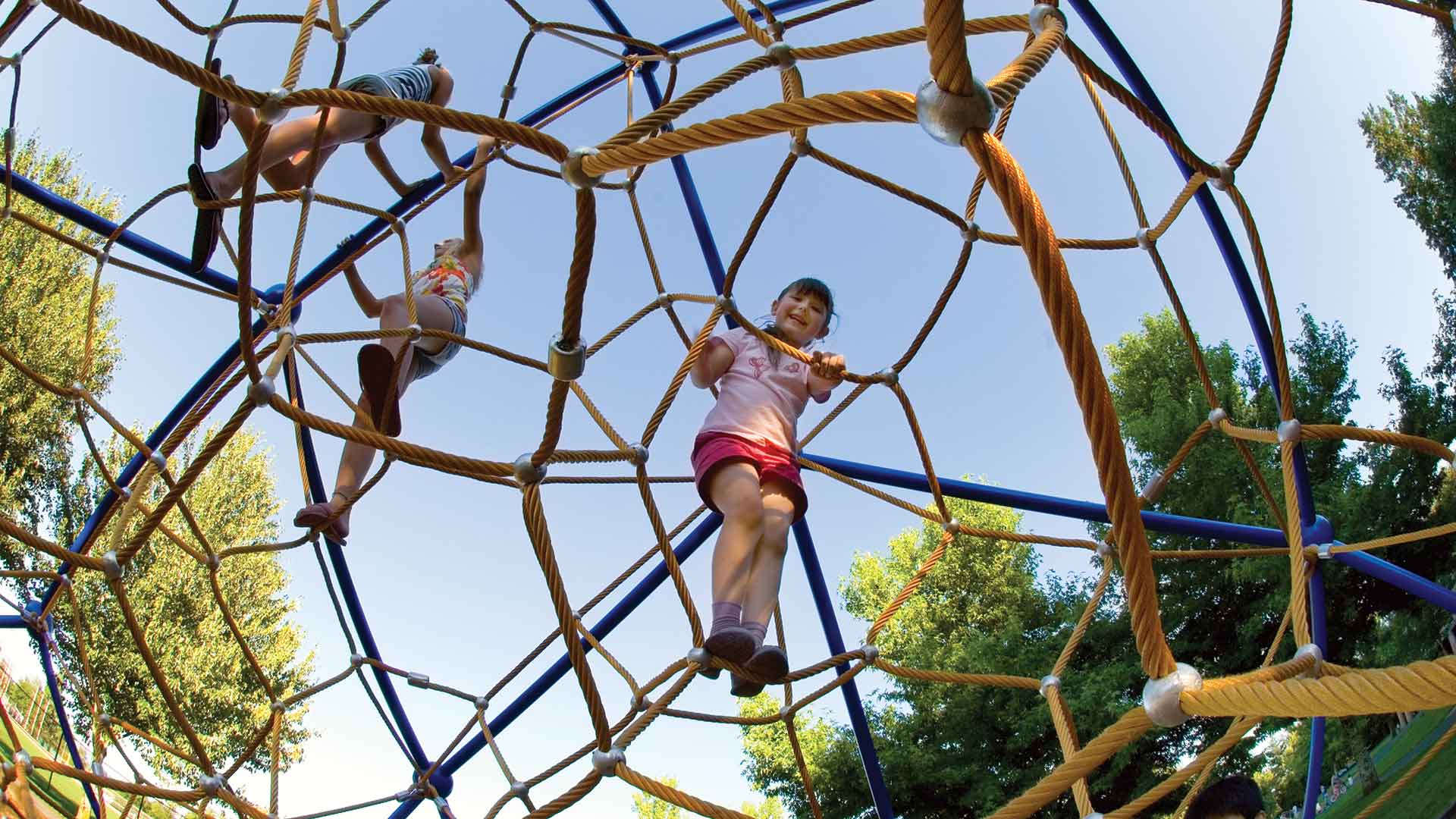




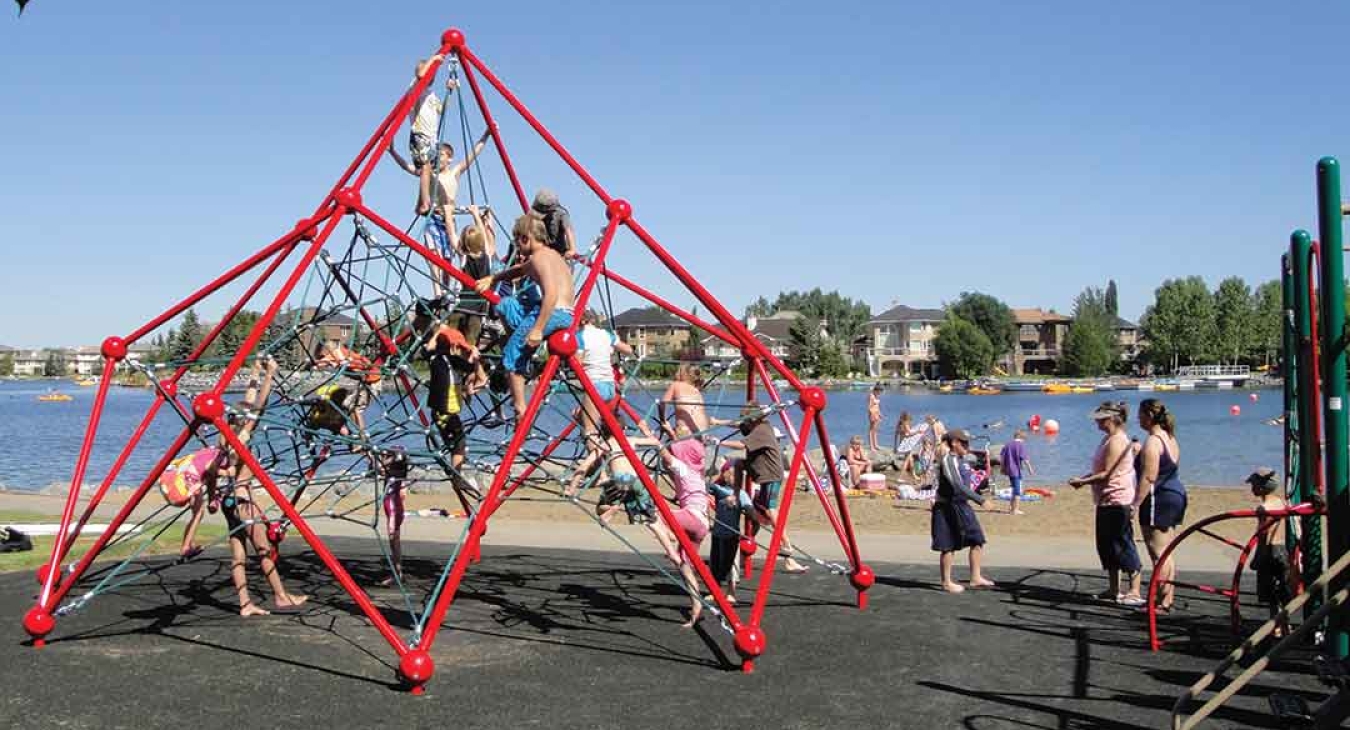
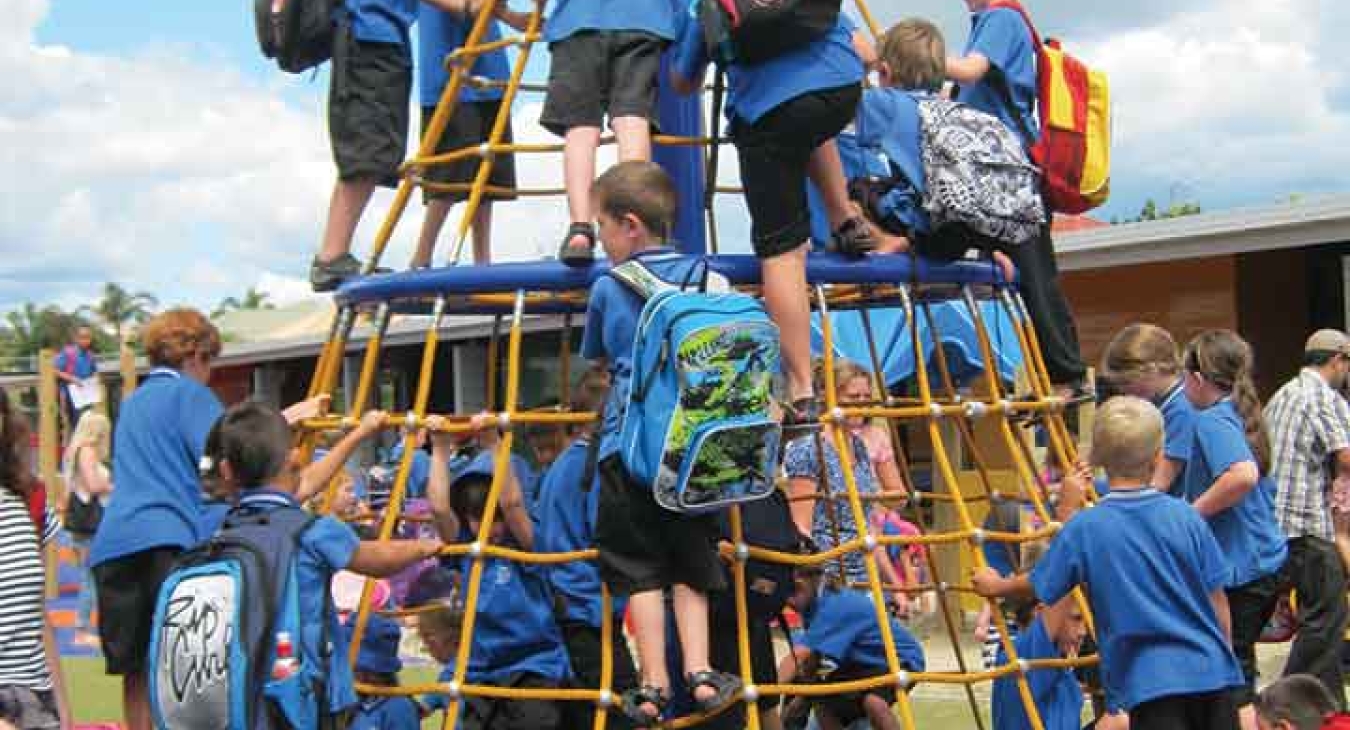
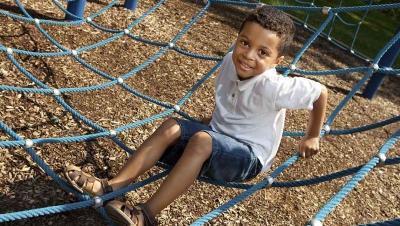

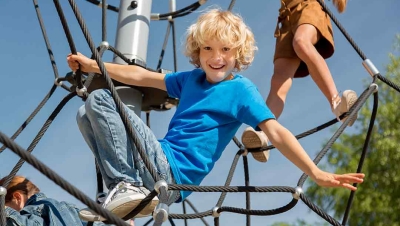








BOY SCOUT EAGLE PROJECT
Hello my son Terrence decuir would like to install a rope based play area for his Eagle project at our local State Park. I am looking to contact someone about the options I have available pricing and installation please give me a call back at your convenience at 337-319-0708 or I can be reached by email at [email protected]
What type of rope should be used
What type of rope should be used for climbing play sets
Add new comment